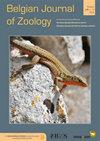How farmland birds react to traffic noise?
IF 1.1
4区 生物学
Q2 ZOOLOGY
引用次数: 1
Abstract
The effect of vehicle noise on farmland birds living in the vicinity of very busy roads was investigated. The study was conducted on two plots of crop fields located near national roads Nr. 12 and 19, the most important trunk roads in Poland and the eastern part of the Europe. The results of the current study are of wide relevance because crop fields are the dominant landscape type in both Poland and Europe. The conservation of the animals, including birds, living in such habitats is a priority issue in view of the strong pressure from human activities and the intensification of agriculture. The fieldwork was carried out in monthly from April to June 2020 and included counting birds in three rows of listening-observation points situated at 50, 150 and 250 m from the roads. At each observation point, all farmland and meadow birds seen and heard during a five-minute period were recorded, as was the maximum ambient noise level during this time. With increasing distance from the roads, the level of noise decreased while the number of individual birds and observed species increased. Most of the birds recorded, like skylark, lapwing, whinchat, yellowhammer, meadow pipit, pheasant, and common quail, avoided the vicinity of the roads. In contrast, the abundant yellow wagtail appeared to be insensitive to traffic noise and was evenly distributed over the two study plots. The roads and their associated traffic noise had a negative impact over a distance of about 100 m. At that distance, noise levels above 53–60 dB led to sharp falls in bird densities. Bird mortality due to collisions with vehicles was low because noise combined with the lack of attractive roadside habitats effectively deterred birds from the vicinity of the roads.农田鸟类对交通噪音的反应如何?
研究了车辆噪声对生活在繁忙道路附近的农田鸟类的影响。这项研究是在波兰和欧洲东部最重要的主干道12号和19号国道附近的两处农田进行的。目前的研究结果具有广泛的相关性,因为在波兰和欧洲,农田是主要的景观类型。鉴于人类活动和农业集约化的巨大压力,保护生活在这种栖息地的动物,包括鸟类,是一个优先问题。实地调查于2020年4月至6月每月进行一次,包括在距离道路50米、150米和250米的三排听力观测点上对鸟类进行计数。在每个观测点,记录了5分钟内看到和听到的所有农田和草地鸟类,以及这段时间内的最大环境噪声水平。随着距离道路的增加,噪音水平降低,而鸟类个体和观察物种的数量增加。记录到的大多数鸟类,如云雀、田凫、啼鸟、黄鹀、草甸鹨、野鸡和普通鹌鹑,都避开了公路附近。相反,大量的黄鹡鸰对交通噪声不敏感,并且在两个研究地块上分布均匀。道路及其相关的交通噪音在大约100米的范围内产生了负面影响。在这个距离上,超过53-60分贝的噪音水平导致鸟类密度急剧下降。与车辆相撞导致的鸟类死亡率较低,因为噪音加上路边缺乏吸引人的栖息地,有效地阻止了鸟类靠近道路。
本文章由计算机程序翻译,如有差异,请以英文原文为准。
求助全文
约1分钟内获得全文
求助全文
来源期刊

Belgian Journal of Zoology
生物-动物学
CiteScore
1.90
自引率
0.00%
发文量
10
审稿时长
>12 weeks
期刊介绍:
The Belgian Journal of Zoology is an open access journal publishing high-quality research papers in English that are original, of broad interest and hypothesis-driven. Manuscripts on all aspects of zoology are considered, including anatomy, behaviour, developmental biology, ecology, evolution, genetics, genomics and physiology. Manuscripts on veterinary topics are outside of the journal’s scope. The Belgian Journal of Zoology also welcomes reviews, especially from complex or poorly understood research fields in zoology. The Belgian Journal of Zoology does no longer publish purely taxonomic papers. Surveys and reports on novel or invasive animal species for Belgium are considered only if sufficient new biological or biogeographic information is included.
 求助内容:
求助内容: 应助结果提醒方式:
应助结果提醒方式:


